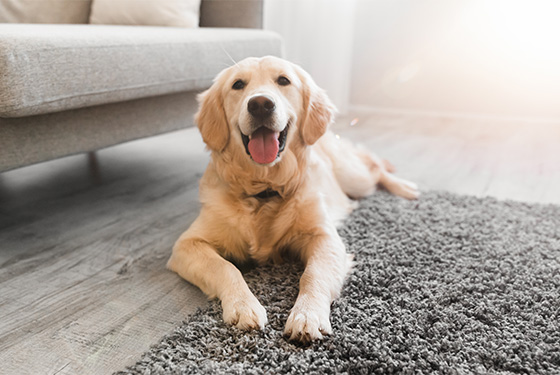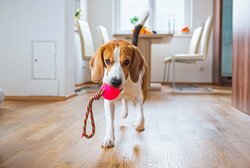Leaving your dog on its own – tips and tricks
Dogs are pack animals by nature and do not like being left alone. This is something they first have to learn. The best time to start is when your dog is still a growing puppy. With the right training, almost every dog can be left alone temporarily without any problems.
Why do dogs dislike being left on their own?
Dogs are descended from wolves, which are typical pack animals. Every member of the pack always makes sure that it stays close to its pack. Those who are left alone run the risk of not getting anything to eat or of being attacked. The greatest risk here is for puppies, who are not able to survive on their own. This applies to the offspring of both wolves and dogs. The advantage that the wild relatives of dogs have is that their young grow up together in the pack and remain together until they reach a certain age.
When it comes to dogs, it is important to remember that most puppies are separated from their mother and siblings at the age of ten to twelve weeks. This loss is not easy to cope with. The puppy now needs to replace its pack with someone they can trust and whom they can rely on in the future.
From what age can puppies be left on their own?
Many puppies arrive in their new homes at the age of about ten to twelve weeks. During the first nights they particularly miss their mother and siblings. They now need to be close to their new humans. During this delicate phase, you should spend as much time as possible with your new family member.
How long it takes to settle in differs from puppy to puppy. It is therefore important to establish how each individual puppy behaves in the first few days. Some will start to feel at ease very quickly, while others will remain more cautious. It is therefore not possible to make a general statement about when you can leave your puppy on its own for a short time. This depends on its character, its breed and how you interact with it on a day-to-day basis.
How can I practise leaving my dog on its own?
Whether it’s a puppy from a breeder or an adult dog – each one has to learn how to stay on its own in its new home. First of all, the prerequisites for this have to be provided within the home:
- Every now and then, leave the room for a few minutes and encourage your dog to stay in the room. Your pet must learn that it is not a problem for it to stay alone here for a few minutes.
- Gradually increase the amount of time, and test how your dog reacts when you close the door behind you.
- Go out onto the balcony or into the garden so that your dog can still see you without being allowed to join you.
- Now leave your home via the front door for a few minutes at a time and listen to how your dog reacts. If it immediately starts barking, wait until it has calmed down. Otherwise, there is the danger that your pet will quickly learn how to get you to come back with the right amount of barking. If your dog remains calm, enter your home after a short period of silence as if nothing has happened. Only greet your pet briefly as you walk by.
- Ideally, you should continually increase the amount of time you stay away. After a few months, many dogs have no problem with occasionally being left on their own for a few hours. It is important to keep practising with your dog. You should also bear in mind that the amount of time you leave your dog on its own should be increased continuously.
How long can a dog be left on its own?
No dog can or should be left on its own for eight hours a day. If you work full-time, you will either need a dog sitter, or you should make arrangements for your dog to come to work with you. An increasing number of employers are open to this. If you have a half-day job, on the other hand, then you can also leave your dog at home.
As a general rule, four to five hours is the maximum. It is important that your dog has learned to be on its own at home. Until you have achieved this, you should constantly train your dog in being left on its own.

4 tips on how to leave your dog on its own
Most dogs dislike being left alone at home, however sometimes it is unavoidable. The following tips will help you to train your dog to cope with this.
- Start practising with your dog indoors while it is still a puppy. Start to leave your dog alone in the room more often.
- Gradually extend the length of time that you leave your dog on its own. First just a few minutes, and then for longer and longer.
- If you are going to be away for an extended period of time, take your dog for a long walk beforehand.
- Surprise your dog with a special toy in order to provide it with a welcome distraction while you are away. This can be a chew bone or an intelligence toy filled with treats. The more the variety, the more you will be able to keep your dog occupied.
At the end of the day, every individual dog is different in how it reacts to being left on its own and how it learns to cope with this.
You may also like this

Dog in the office
Tips for the office day with your dog

Keeping your dog occupied
Occupation is important for a dog

A puppy is moving in
Tips on picking it up, the items you need and acclimatisation

Daily routine with dogs
A regular daily routine is important for dogs
